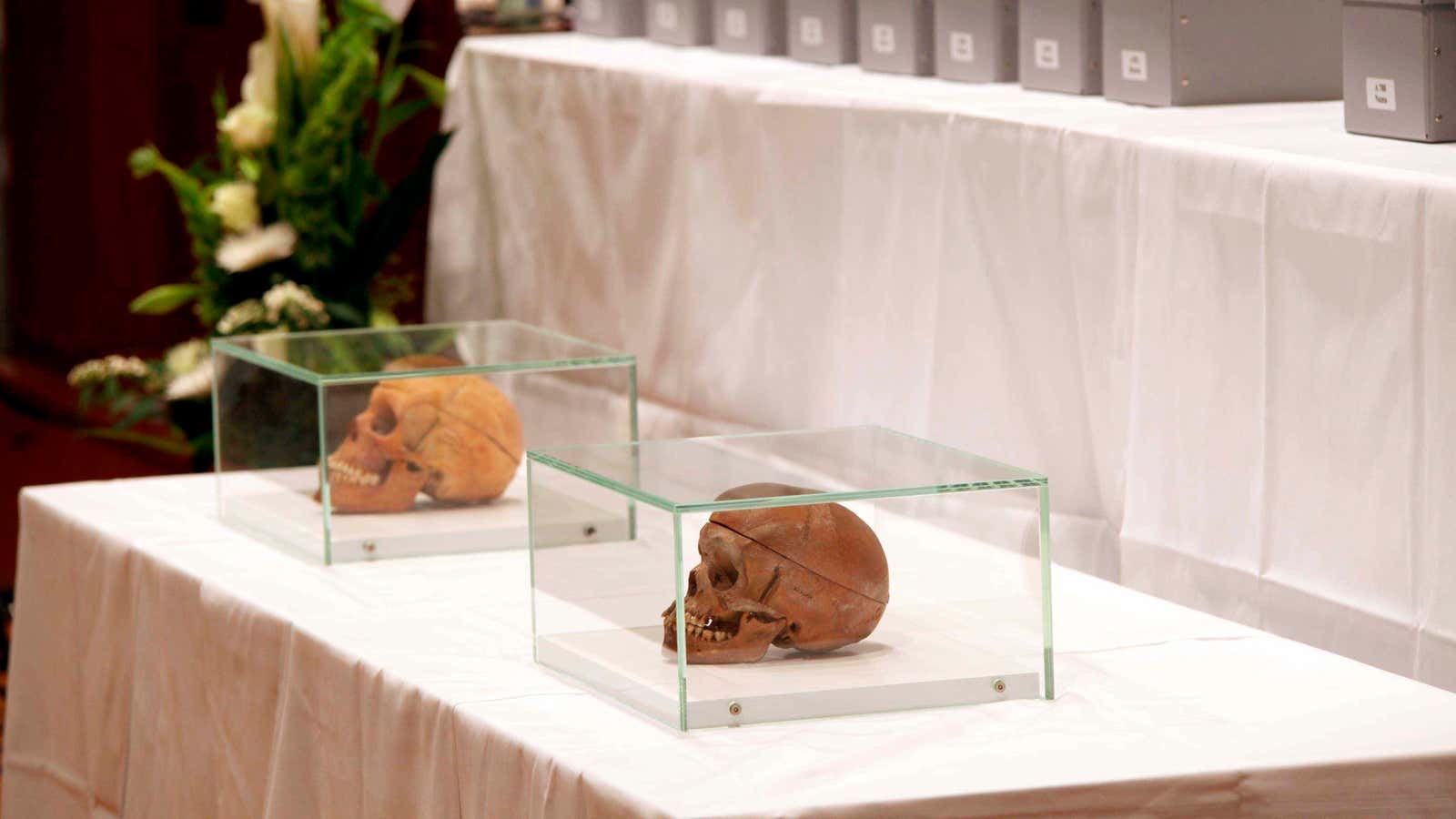Walking through the American Museum of Natural History, Barnabas Veraa Katuuo found the bones of what could have been his ancestors, murdered in Germany’s first genocide. Katuuo has accused the famed New York City museum of storing the remains of Namibia’s ovaHerero and Nama peoples as part of their vast collection.
The genocide perpetrated by German colonial troops is widely viewed as the first of the twentieth century, perpetrated from 1904 to 1907, but is rarely recognized. Historians believe that the atrocities perpetrated by the German troops became a precursor for those perpetrated during the Holocaust. The parallels between Germany’s two genocides are chillingly similar: the extermination order for the sake of expansion, forced labor in concentration camps and scientific experiments on prisoners.
Katuuo, a founding member of the Association of the ovaHerero Genocide in the USA, visited the museum on Sept. 12 and confirmed that of the eight sets of human remains on display, at least two are victims of Germany’s colonial-era genocide. Katuuo believes the human remains belong to victims who died at the Shark Island, a windswept rock that became the prototype of Germany’s concentration camps. The other, he believes, came from Windhoek, Namibia’s capital city that once held a concentration camp.
“It is likely that these remains were then used extensively in pseudo-scientific experiments to support racist theories regarding the inferiority of the African races and the superiority of the German peoples,” Katuuo said in a statement.
The remains are part of the museum’s collection, but are not on display or accessible to the general public, said spokesman Roberto Lebron.
Germany only apologized for the horrors of its colonial past in Namibia last year. Led by the notorious general Lothar von Trotha, German troops brutally quelled a rebellion by the ovaHerero and Nama people, driving them into the desert so that those who survived the gunfire would surely die of thirst and hunger. Of the more than 80,000 Herero population, only 15,000 survived.
The few survivors were herded into concentration camps and were forced to dig up Herero graves to retrieve the skulls of their dead relatives. Women were forced to skin and boil the skulls, which were used in German experiments to prove Aryan superiority and African inferiority. The skulls held in Germany were returned to Namibia in 2004.
The remains are believed to have reached New York City via the private collection of professor Felix von Luschan, a German anthropologist. Von Luschan was a member of the German Society for Racial Hygiene and devised a hierarchy of skin color. Along with the Namibian skulls, he was also believed to have acquired a large collection of Benin antiquities. After his death in 1924, his wife sold his private collection to the American Museum of National History, paid for by the German-born New York banker Felix Warburg, according to the association’s statement.
“The genocide of the Ovaherero and Nama peoples continues to have repercussions not only in Namibia, but also in places such as New York and the rest of the US, where many of the descendants of survivors of the genocide have settled,” said Kenneth F. McCallion, the association’s attorney. The association is made up of the descendants of the genocide who are suing Germany for reparations in a New York Court.
